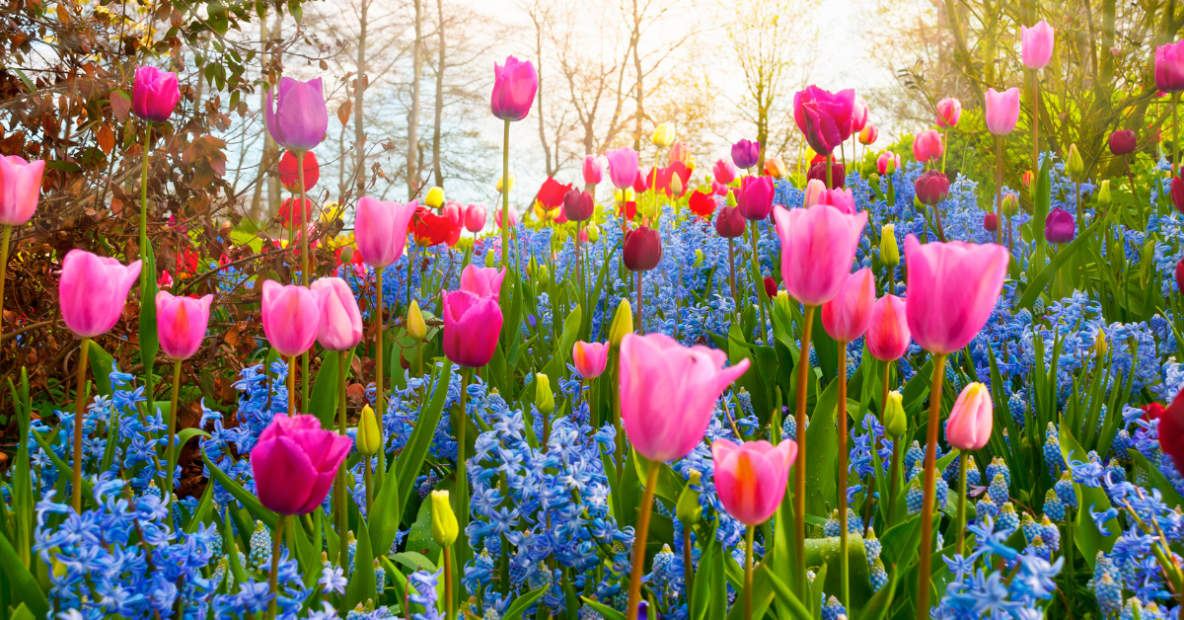Known as floriography, the cryptic message of flowers has been used for thousands of years. The Victorians especially, loved how they could use flowers to send small bouquets (or nosegays) of coded messages to their loved ones. These flowers could be worn or carried as fashion statements, whilst the message itself could be decoded with a bit of patience and a copy of a good floral dictionary!
Floral dictionaries were printed in the UK as far back as 1811. The most popular one though was Routledge’s ‘The Language of Flowers’, illustrated by Kate Greenaway. It was initially published in 1884, but it continues to be reprinted to this day.
What makes the language of flowers so interesting is it isn’t just about the different type of flowers. Everything from the colour, the stage of growth and the way it’s handed over to you, all played a part!

Poppies in summer in countryside
Colour is an important part of your floral choices
Take the rose as an example. It’s always been associated with love. Today, we still see the rose as symbolising love, with many brides including them in their wedding bouquet. We still hand roses out on Valentine’s Day, to symbolise our love for someone. In Victorian time Carnations (symbolising beauty and divine love) and lilies (beauty, refinement and purity) were also popular choices.
But did you know, the colour is just as important as the flower itself? For example, a red rose may signify love and respect, but hand someone a dark crimson one, and you’re giving them a sign to mourn a loss. A red carnation is letting your partner know your heart aches for them; whereas a yellow one simply illustrates you’re disappointed in them and reject them!
How they’re arranged helps spell out your message
A bouquet of different flowers and colours can really add to your overall message. For example, purple irises signify a promise, Hosta leaves; devotion. Add in blue salvia (thinking of you) and orange roses (love) – and you’re telling someone you love and miss them, whilst you’re away!
The delivery method and whether they’re in bud or bloom is important
Send someone a bouquet that includes rose leaves; you’re letting them know they can be hopeful. A red bud is more about innocent love and letting someone know you find them young, beautiful and pure. Hand over a rose with no thorns and you’re telling someone it’s always been love at first sight for you.
Hand your flowers over in your right hand – you’re saying ‘yes’. Want to say no? Simply give them flowers from your left hand. If you give someone a bunch of flowers upside down, you’re conveying the opposite of what they traditionally mean. Meanwhile, if you tie your flowers with a ribbon, even how that sits, means something! Tied to the left, the message applies to the giver, whereas tied to the right would reference the recipient. Oh, and if you hand over a wilted bouquet to anyone – you’re signifying the death of something or the end of your romance!
The secret language of flowers is a cryptic and fascinating one, something the Victorians relished. Whereas the more in-depth messages are often lost nowadays, the main sentiment behind some flowers has remained – and is something that can be an interesting and fun subject to learn!
You can read more about the secret language of flowers here.


